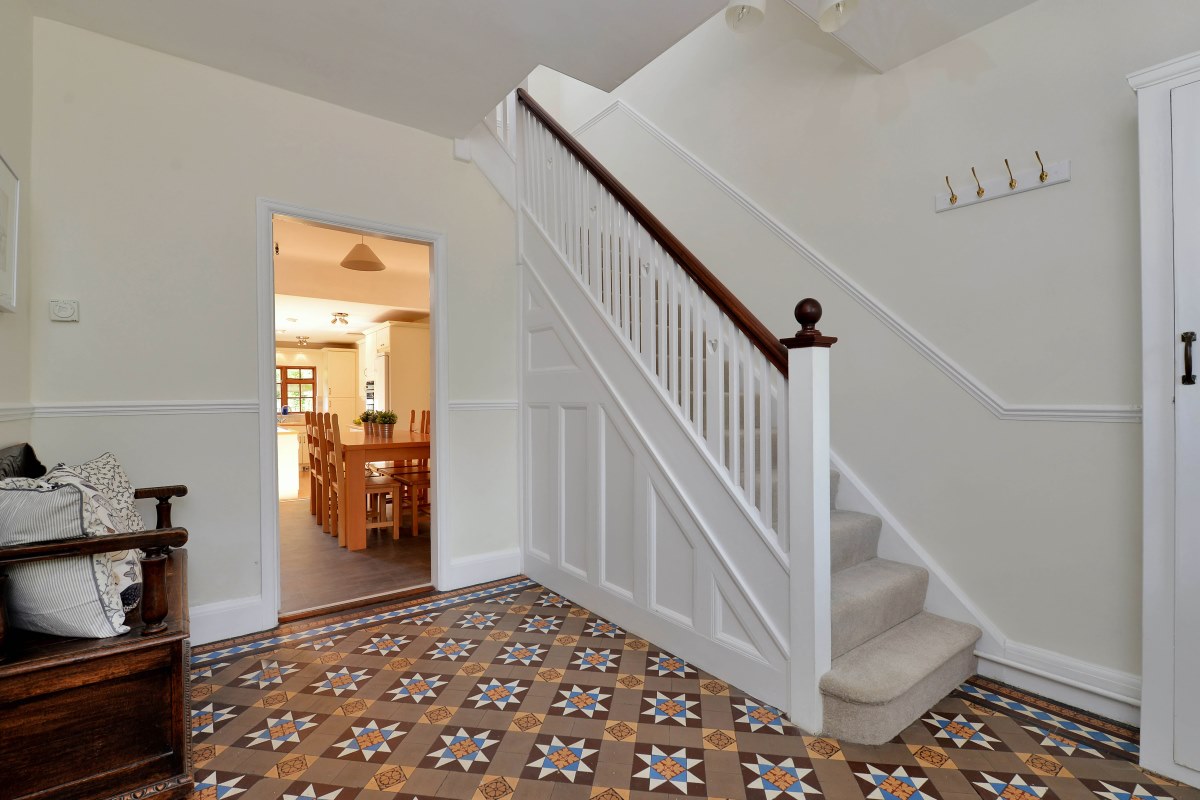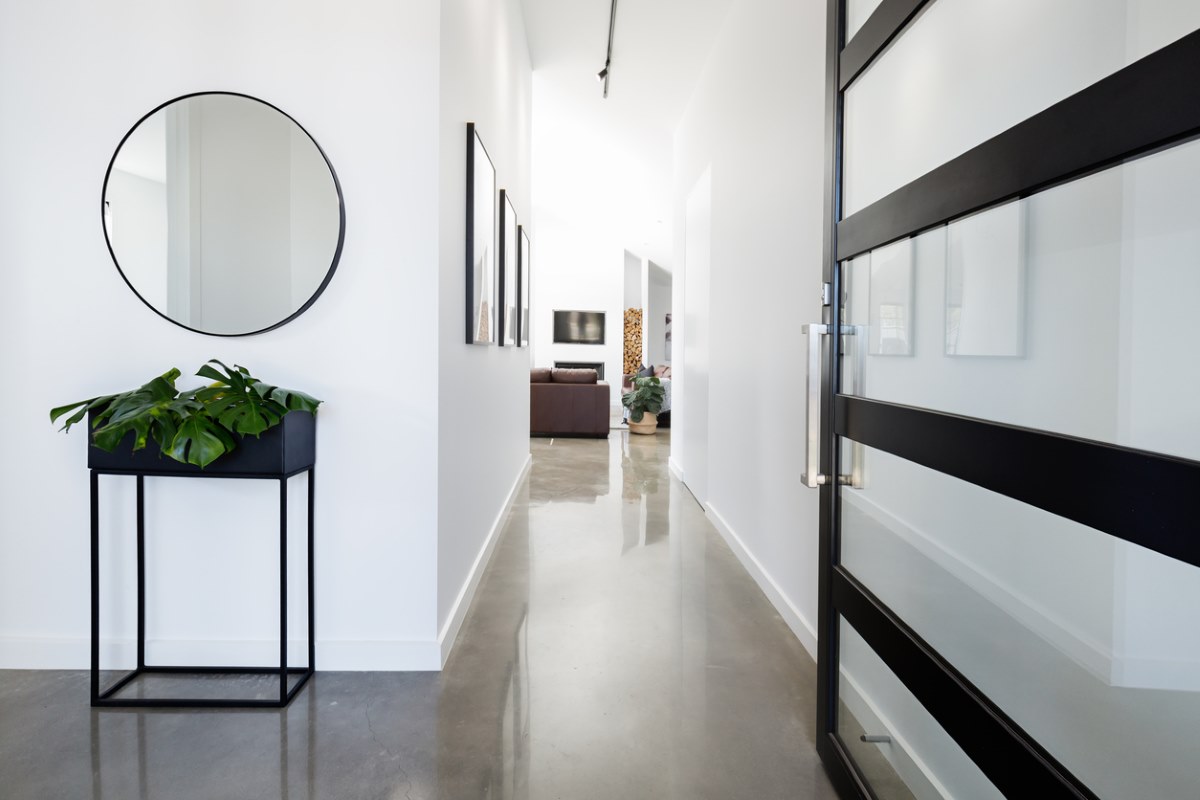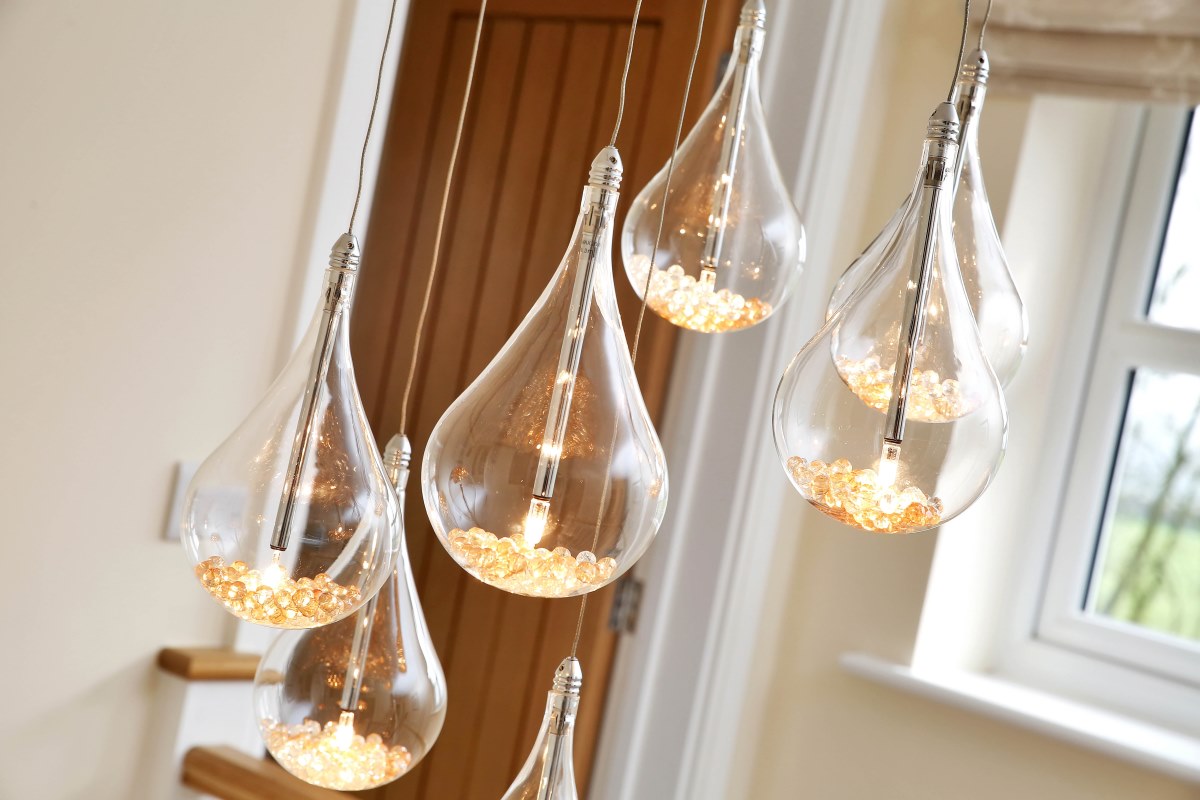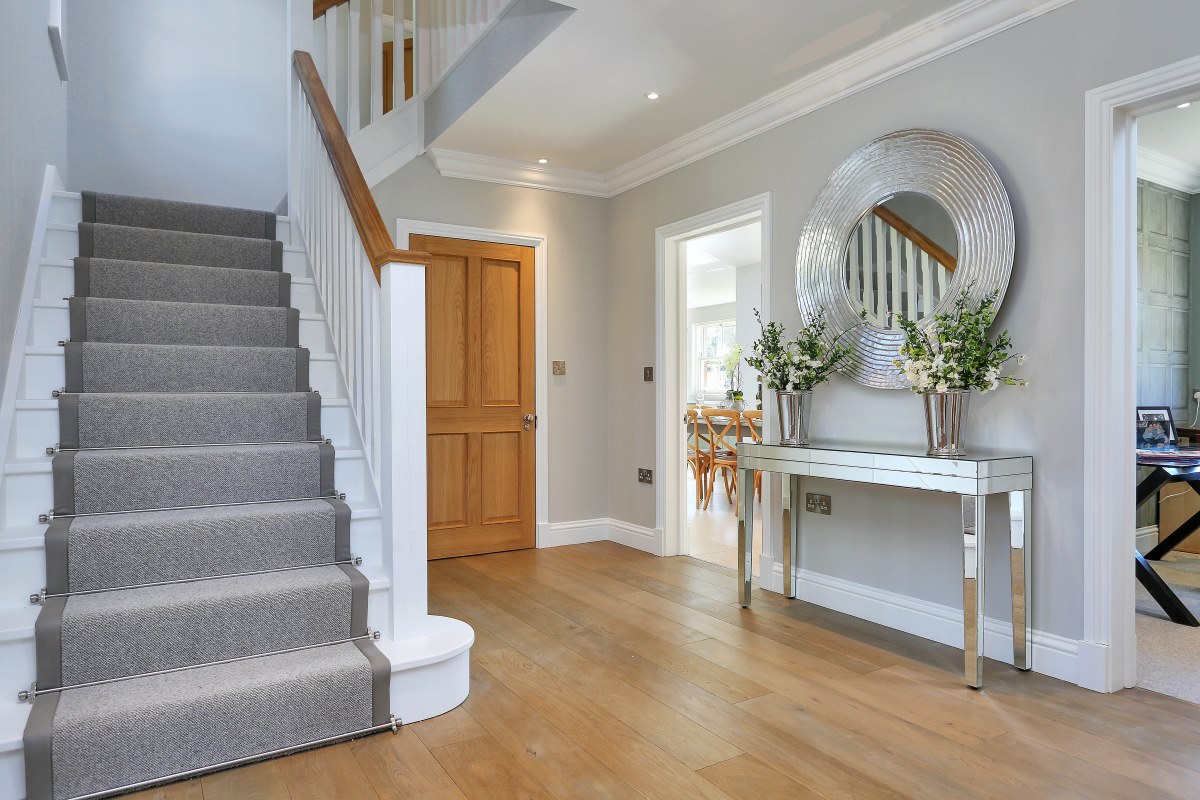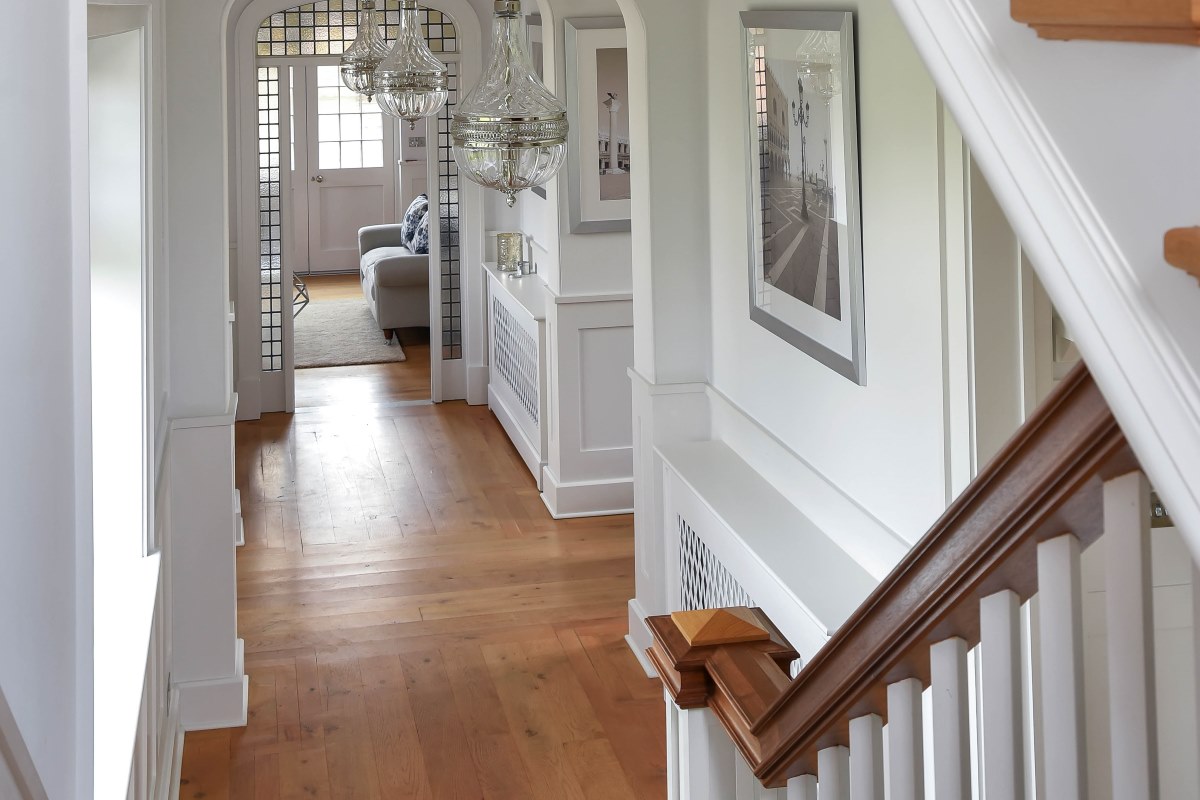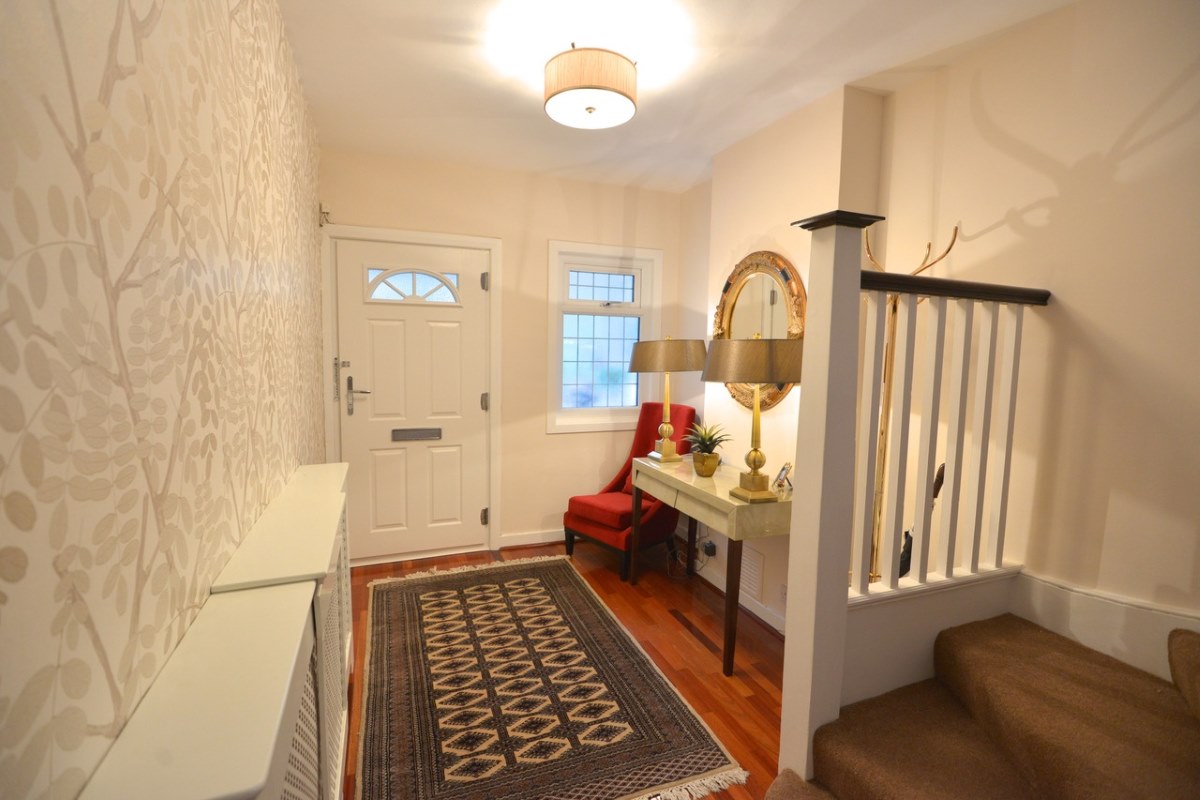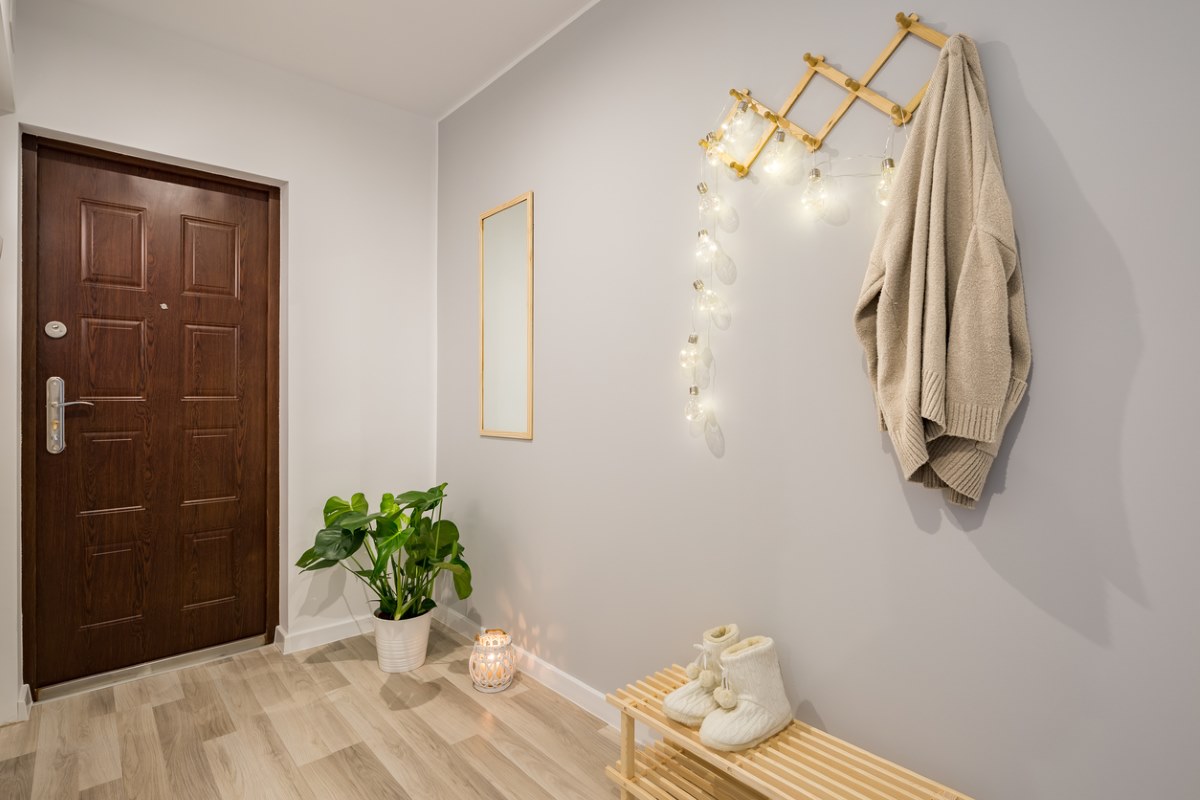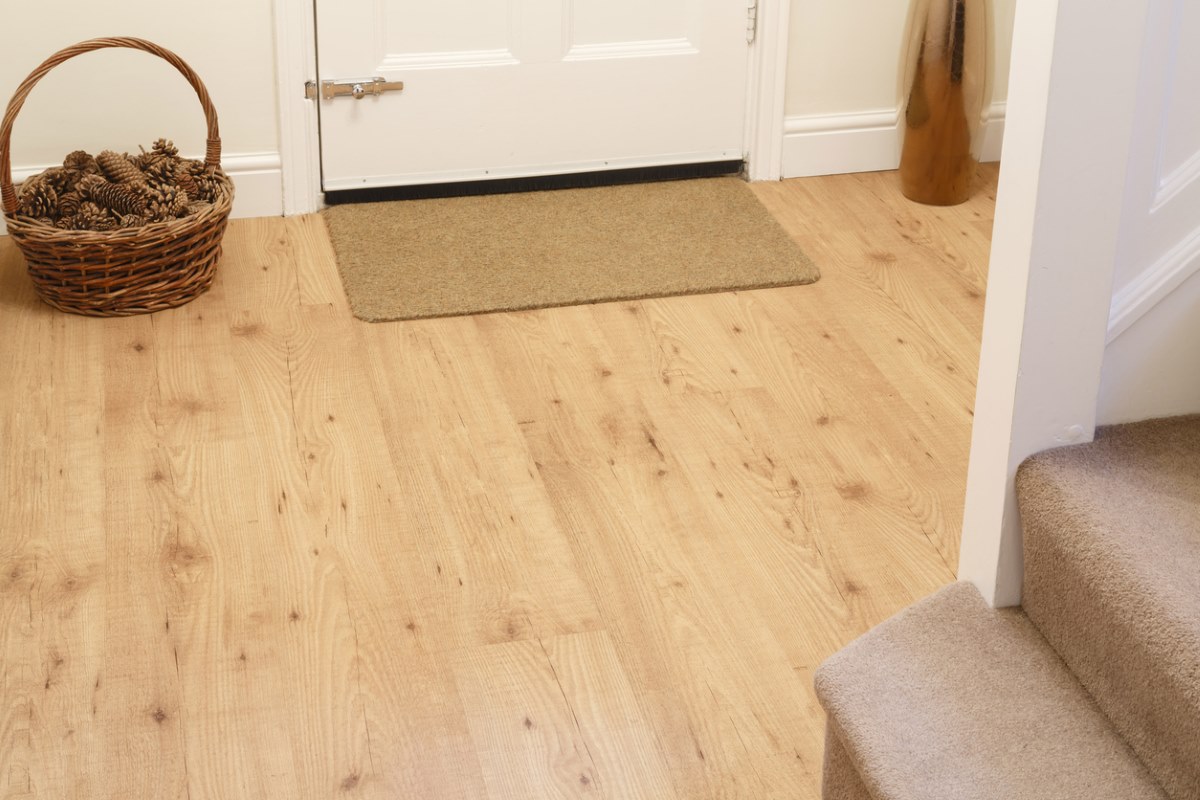1. Colour
Elaine: There are lots of ways to create the illusion of space. An easy and simple way to do this is in a small hallway is to freshen the area up. A lick of paint in a bright light colour will make a huge difference.
Vicky: By keeping the floor darker than the walls and staircase, our eyes are immediately drawn upwards towards the lighter areas, giving a sense of more space.
Emile: The best way to create the feeling of light and space is to use contrasting colours. Use two colours - a lighter colour on the walls and choose darker coloured woodwork. Using greater amounts of the pale shade and less of the dark will make the space feel bigger and more airy. Alternatively, painting your hallway in a strong colour creates a sense of drama, and each time you go through a darker hall into the rooms beyond, the eye is tricked into believing the rooms are really big and light.
As transient spaces, hallways are ideal for playing with pattern. You can choose a bold wallpaper that you wouldn’t necessarily want to live with in another room where you spend more time. You can use extravagant wallpaper in high traffic areas without fear of damage by papering above the dado and painting below. That way scuffs or marks can simply be painted over. I like to lower the dado, at around 70cm. It is a much more contemporary look.
Semsettin: It goes without saying that pale colours and tones will help refract natural daylight to make your hallway appear larger. In a white room, a dark timber staircase can act as a focus point.





